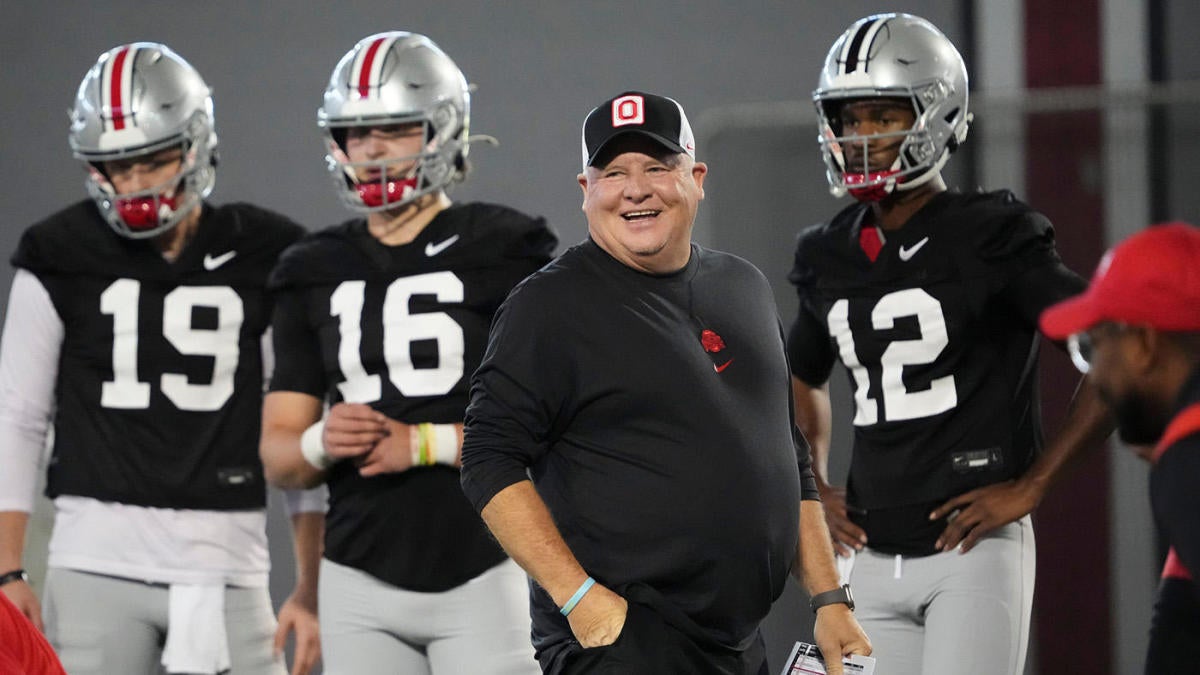
The Big Ten is coming off its best season on the football field in years and can call itself the home of the national champions for the first time since 2014 thanks to Michigan’s College Football Playoff run. The team the Wolverines beat to win the title, Washington, is one of four newcomers to the league, and while it won’t officially join until the summer (alongside Oregon, UCLA and USC), it is preparing this spring for its first season in its new home.
Both teams are excellent reflections of the kind of offseason the Big Ten has undergone. Everything is different. Michigan won the national title but has a new coach, Sherrone Moore, and plenty of new players in pivotal spots. Washington is in a similar boat after Kalen DeBoer left to take the Alabama job.
The Big Ten looks different across the board, from the makeup of the schools to the depth charts in the locker rooms. Each of its 18 (18!) members have plenty of questions that remain unanswered as they enter spring practice. We’re not likely to get answers to most of them in March and April, but the spring is our first glimpse at possible solutions. With that in mind, let’s examine the biggest questions facing each Big Ten team this spring.
Can the defense recover from its losses? Two years ago, Illinois had its best season since 2007 with eight wins and, at one point, a spot in the College Football Playoff Rankings. But then the secondary, anchored by top-five NFL Draft pick Devon Witherspoon, left for the NFL; defensive coordinator Ryan Walters left for the Purdue job.
Aaron Henry stepped into the role left by Walters. Though Illinois still had stalwarts Johnny Newton and Keith Randolph along the defensive line, the unit wasn’t the same in 2023. After allowing 12.8 points per game in 2022, the Illini allowed 29.4 last season. Now Newton and Randolph are gone, as is nearly every start from the 2022 unit.
This is the first season in which Illinois’ defense will be manned by Bret Bielema’s recruits and transfer additions. It’ll also be Aaron Henry’s second season as the defensive playcaller. If Illinois wants to get back to the success it found in 2022, the defense will have to take another step forward.
Can a new offense bring more explosive plays? Indiana fired Tom Allen and replaced him with Curt Cignetti from James Madison. The Hoosiers were also active in the transfer portal, bringing in Ohio quarterback Kurtis Rourke, who brings plenty of experience and had a lot of success with the Bobcats in the MAC.
The hope is he can make the Hoosiers offense more dangerous. Indiana finished 99th nationally in points per drive last season at 1.77, primarily because of a lack of big plays. Indiana’s explosive play rate of 9.5% ranked 122nd. The James Madison offense ranked 41st.
We aren’t likely to see the Hoosiers make a significant leap in Year 1 under Cignetti, but if Rourke can ignite the offense, we should see improvement.
What is the new offense going to look like? Longtime offensive coordinator Brian Ferentz is gone, replaced by former Western Michigan head coach Tim Lester. While that change itself is a significant one on the surface due to the kind of offense Lester has run at previous stops, it remains to be seen what Lester’s Iowa offense will look like.
In previous stops, Lester’s teams have run almost primarily out of the shotgun and featured plenty of RPOs. Will he be allowed to run his offense in Iowa City, or will coach Kirk Ferentz task him with running a more “Ferentz-like” version of the offense? This spring will be our first glimpse.
Whatever the answer, it’ll be hard for Iowa’s offense to be worse. Last season, the offense finished 132nd or 133rd (of 133 FBS teams) in points per drive, offensive success rate, EPA per play, and explosive play rate. It was ugly, even for Iowa.
What does a post-Taulia offense look like? Taulia Tagovailoa played 41 games at QB for the Terrapins and threw for 11,256 yards and 76 touchdowns. No QB in Big Ten history has thrown for more yards, so it’s no understatement to say Maryland’s next QB has large shoes to fill.
That will likely be M.J. Morris. It’s an open competition this spring, but Morris transferred in from NC State in a peculiar fashion. Morris took over Brennan Armstrong’s starting role last year, but after playing four games, he asked to sit for the rest of the season to preserve a year of eligibility. Something tells me Morris didn’t make that choice and then transfer to Maryland while under the impression he’d have to compete for the job.
Either way, Morris joins an offense with intriguing talent at receiver and running back, and coach Mike Locksley is not be afraid to let it loose.
Michigan
Is this a reload or rebuild situation? That’s not a question often asked of the defending champions, but it’s fitting for the Wolverines. Jim Harbaugh is gone, and he’s taken a good portion of last year’s coaching staff with him. Moore takes over, and he picked up valuable game-day coaching experience due to Harbaugh’s suspensions last season. The Wolverines have lost their offensive line, top receiver and leading rusher. The defense returns some key pieces but also loses plenty. Oh, and they have to replace the QB (J.J. McCarthy) whom Jim Harbaugh refers to as the greatest in program history.
The QB situation, for example, is big because there truly is no obvious answer. Jack Tuttle is the veteran, but the sixth-year player doesn’t have much playing experience. Alex Orji saw playing time last year but has thrown only one pass in anger in two seasons. The other options are Jayden Denegal and Jadyn Davis. It’s unlikely that Davis, an incoming freshman, will win the job, but it’s not impossible.
It’s also possible Moore will probe the post-spring practice transfer portal for an option if he isn’t overly thrilled with what he sees from his current roster. There are way too many questions surrounding Michigan this spring to anticipate having any answers by the end of camp.
Is Aidan Chiles the “chosen one”? It’s safe to say Michigan State fans are some of the most eager in the conference to turn the page on last season as a new era gets underway this spring. Jonathan Smith replaces Mel Tucker as coach, and given the level of success Smith found at Oregon State, it stands to reason he’ll win games with the resources at his disposal in East Lansing.
The most pivotal resource is probably the one he brought from Corvallis. Aidan Chiles was a highly rated prospect out of high school who committed to Smith at Oregon State and followed him to Michigan State. Smith has already made it clear that Chiles will be the starting quarterback.
There is no obvious answer for the Big Ten’s best quarterback. There are no obvious first-round draft picks hanging around. Chiles has a chance to prove he’s the best of the bunch, and Michigan State wants him to get all the reps with the first team this spring to speed up the process.
Can Corey Hetherman continue what Joe Rossi started? While it shouldn’t be ignored that a typically reliable Minnesota offense — one that’s never elite but typically above average during P.J. Fleck’s tenure — took a dip last season and needs to bounce back, the bigger question is on the other side of the ball.
Minnesota’s defense has been one of the strongest units in the Big Ten for years and produced plenty of NFL Draft picks. The man who oversaw the unit, Rossi, left to take the defensive coordinator role at Michigan State. He’s replaced by Hetherman, who comes to Minnesota after spending the last two seasons as Rutgers‘ linebackers coach. He was previously the defensive coordinator at James Madison and even has some offensive coordinator experience from early in his career. He knows both sides of the ball, but this will be his biggest gig and he has large shoes to fill.
Will Minnesota stick to a scheme that was successful under Rossi, or will Hetherman bring a new approach? Hetherman’s ability to keep the defense’s performance at the same level, regardless of scheme, will go a long way toward determining Minnesota’s 2024 season.
Is QB Dylan Raiola worth the hype? Nebraska fans have had many quarterbacks to get excited over the last 10 years, but few of them have met expectations. Raiola is the latest hope. The five-star QB spurned Georgia to play for the Cornhuskers, and the hopes of one of college football’s most loyal fanbases rest on his broad shoulders.
No matter what coach Matt Rhule tries to do this spring, Raiola will be the focus all offseason — and for good reason. Yes, Raiola is extremely talented, but it’s not all about him. It’s also about the level of production Nebraska got at the position last year.
Nebraska’s passing offense ranked No. 115 in explosive play rate, No. 123 in success rate and No. 129 in passing efficiency. The Huskers had a team Whoopsy Daisy Rate (interceptions and fumbles) of 6.36%, the worst in the country. If Raiola can step in and be merely a slightly below-average Big Ten QB in his freshman season, it will work wonders for Nebraska.
Can coach David Braun do it again? Northwestern’s last offseason was a mess. Pat Fitzgerald was fired shortly before the season began due to a hazing scandal surrounding the program. In stepped Braun as interim, and he took over a team with rock-bottom expectations to an 8-5 mark en route to winning coach of the year.
Can he do it again? While this will be Braun’s second season in charge, it’s his first spring practice. It’s also a coaching staff with plenty of new faces; the offseason presented Braun with his first chance to bring in his own staff instead of working with those hired under Fitzgerald.
For the Wildcats, this spring is truly the first time to hit the reset button and begin anew.
What does the new-built offensive look like? No Big Ten team has had a better offseason than Ohio State. The Buckeyes responded to losing to Michigan for the third straight season by going into the transfer portal and landing some huge fish like DB Caleb Downs and RB Quinshon Judkins. They’ve even replaced Kyle McCord at QB with Will Howard. On top of it all, Ryan Day got Chip Kelly to hand in his headset at UCLA to be the team’s new offensive coordinator. Oh, and Jim Harbaugh left for the NFL.
Day and Ohio State are all in on 2024, but how much room for improvement is there really?
I don’t know if Howard is better than McCord as much as he’s different than McCord. Howard is more mobile, and with Kelly and the roster construction, it’s safe to assume Ohio State plans to lean into it with a power run game. The spring will be our first glimpse at what it may look like.
Oregon
Will there be an adjustment period for QB Dillon Gabriel? If you ask a Big Ten fan who the best quarterback in the league is, odds are they’ll think about it for a while before answering your question with a question of their own:
“Dillon Gabriel?”
Gabriel comes to Eugene as a grizzled veteran of college football, having played 50 games over five seasons between UCF and Oklahoma. He’s a natural replacement for Bo Nix, who was an experienced QB himself. Gabriel played in plenty of big games with the Sooners, and he’ll play in plenty more with the Ducks. While Oregon must replace some key players across the depth chart, there’s a strong argument that none of the Big Ten’s newcomers are better-positioned to compete for a conference title in their first year than the Ducks. They’re strong along the lines of scrimmage and have talent spread across the field. Gabriel doesn’t need to play at a Heisman level to win games for the Ducks, but the fact he can play at that level is a reason for Oregon fans to be excited.
Will Andy Kotelnicki bring big plays to the offense? Few teams in the Big Ten have more talent than Penn State, but more often than not, the Nittany Lions have failed to break through to the top of the league. This year, they have a talented QB in Drew Allar, returning for his second season as a starter, which is an advantage over plenty of their primary competition. However, the biggest change for Penn State will be the play-caller.
Kotelnicki comes to Penn State from Kansas, where he was at the helm of one of the country’s most potent and exciting offenses. Even back to Kotelnicki’s time at Buffalo, he’s put together offenses that can light up scoreboards.
Last year, Kansas’ offense ranked 11th nationally in points per drive and seventh in explosive play rate — this, despite missing starting quarterback Jalon Daniels for most of the year, The latter stat is what matters to Penn State. The Nittany Lions ranked No. 103 in explosive play rate offensively last season, which meant they had to put together a lot of long scoring drives. It’s hard to score consistently when you need eight or more plays to do so. If Kotelnicki can find ways to get more chunk plays with the talent on this roster, Penn State could finally make its way to the College Football Playoff this season.
Purdue
Who are these guys? Walters’ first season in charge at Purdue did not go to plan. After a surprise division title in 2022, the Boilermakers fell to 4-8 last season and were only 3-6 in Big Ten play. There was plenty of turnover on last year’s team, but there’s even more this year.
Purdue lost a lot of players in the portal but gained plenty of new ones from it as well. The roster in Walters’ second season will look different than the one you saw on Saturdays last season, so one of the primary tasks this spring will simply be getting everybody up to date on their new roles and the playbook.
Rutgers
Will the Scarlet Knights throw a pass this season? It’s hard to argue with the results of Greg Schiano’s second tenure with Rutgers. After a slight step backward in 2022, the Knights had their best season yet in 2023 with a 7-6 record and a Pinstripe Bowl victory. The fact they did it without anything resembling a passing attack only makes it more impressive, but it isn’t sustainable.
Rutgers ran the ball 62% of the time last season. Only the three service academies, Liberty and Jacksonville State ran the ball more often. When Rutgers did throw the ball, it didn’t work very well. Gavin Wimsatt completed only 47.8% of his pass attempts, averaging 6.0 yards per attempt, and finished with nine touchdowns and eight interceptions.
That’s why it was no surprise to see Rutgers use the portal to bring in Athan Kaliakmanis from Minnesota, but his work with the Gophers wasn’t much more impressive. Kaliakmanis completed only 53.1% of his passes last season for 6.3 yards per attempt with nine interceptions to just 14 touchdowns. Those two are the favorites in a true QB battle this spring, but their overall ineffectiveness as passers is why incoming four-star QB AJ Surace shouldn’t be ruled out.
UCLA
What will this team look like? It’s not just the conference changing for UCLA; it’s the program. Kelly left to become the offensive coordinator at Ohio State. Before that, defensive coordinator D’Anton Lynn, who built a strong unit last season, moved to the other side of town to take over USC’s defense. DeShaun Foster is the new coach in charge, inheriting a situation in flux.
There’s plenty of work to be done on the defensive line, where the Bruins lost Laiatu Latu, and the offensive line needs to step up after a somewhat lackluster performance in 2023. All in all, this spring should be about setting a foundation for success with 2025 in mind. Adapting to a new conference is a difficult adjustment on its own, but doing so while overhauling your entire coaching staff complicates things further.
USC
Can the Trojans tackle anybody? USC loses Caleb Williams, who won a Heisman Trophy in 2022 and will likely be the No. 1 pick in the NFL Draft, yet replacing him is not the biggest question facing the Trojans. That’s a testament to Lincoln Riley’s ability to build good offenses around many different quarterbacks as a coach and offensive coordinator. Will it be Miller Moss or UNLV transfer Jordan Maiava? I don’t know! Whatever the choice, the Trojans will probably still score points!
The problem this program has faced under Riley is keeping the opponent from scoring points. To be blunt, USC looked poorly coached on the defensive side of the ball over the last two seasons, and Riley finally decided to do something about it. Alex Grinch is out, and D’Anton Lynn is in. The defensive staff is full of coaches with head coaching and coordinator experience, and it certainly feels like USC is ready to take defense seriously again.
A top defense nationally is probably too much to ask, but if the Trojans simply do a better job of being in position pre-snap and tackling, we’ll see a marked improvement. The foundation of that improvement will be laid this spring.
Washington
How do the Huskies stay afloat? I don’t know if you’ve noticed the constant theme in this story yet, but there is a lot of change in the Big Ten this year. Washington reached the national title game in January and lost to Michigan. It’s lost a lot more since. DeBoer left for the Alabama job, taking coaches and players with him. The Huskies also lost QB Michael Penix, WR Rome Odunze, OL Troy Fautanu, EDGE Bralen Trice, and a lot more to the NFL Draft. New coach Jedd Fisch arrived from Arizona and is bringing his staff and plenty of players with him, but the Huskies you see on the field for their first season in the Big Ten will have little in common with the ones who played for a title a few months ago.
It’s unlikely Washington will compete at the same level in 2024, so Fisch’s job this spring (and all offseason) is to do everything he can to keep the Huskies from taking a massive step back.
The good news is that he and his staff convinced QB Will Rogers to stay. Rogers transferred to Washington from Mississippi State but reentered the portal after DeBoer left and had to be convinced to stick around. Rogers is not Penix, nor will he have the same receivers available to him, but he’s an experienced power-conference QB who will run the offense efficiently.
Can QB Tyler Van Dyke deliver for the offense? When Luke Fickell took over as coach and brought Phil Longo with him as offensive coordinator last offseason, plenty of words were written about how different things would look for the Badgers offense. And they did look different. They just didn’t look more effective.
After averaging 26.3 points per game in 2022, the Badgers scored 23.5 last year. Injuries to QB Tanner Mordecai did not help the situation. This spring, the Badgers have brought in transfer Tyler Van Dyke from Miami.
Van Dyke had a terrific freshman season with the Hurricanes in 2021 but came back down to Earth over the last two years under Mario Cristobal. The hope is that a change of scenery and scheme will result in TVD resembling the 2021 version and help this Wisconsin offense shift gears in 2024. The coaching staff is confident this will be the case.

Must See
-
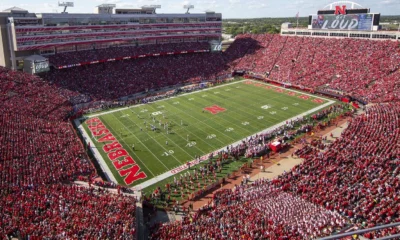

Featured
/ 2 days agoFan Guide to the Red-White Spring Game
Nebraska fans are set for a thrilling Saturday at Memorial Stadium for the annual...
-
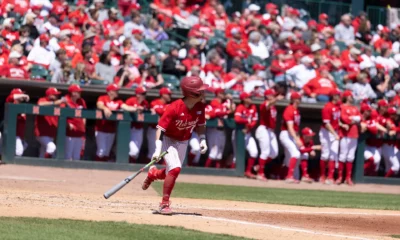

Baseball
/ 6 days agoHuskers Command Series Victory with a Resounding Win
In a spectacular show of force, Nebraska equaled its highest run tally of the...
-


Men's Gymnastics
/ 7 days agoHuskers Garner Five All-Americans at NCAA Gymnastics Finals
In Columbus, Ohio, the Nebraska men’s gymnastics team concluded their season with an impressive...
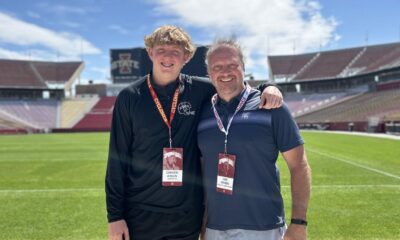

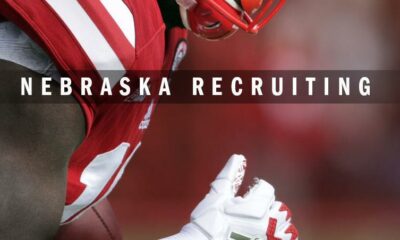

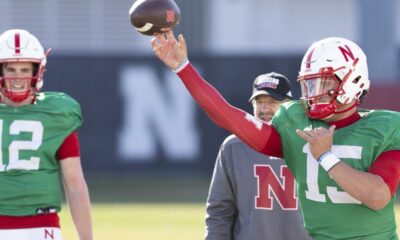





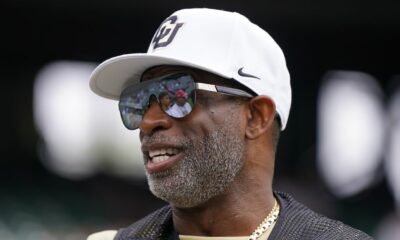

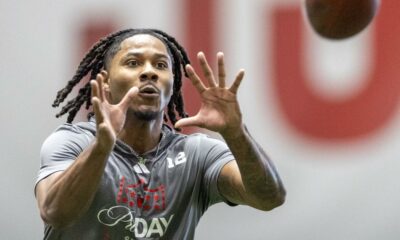

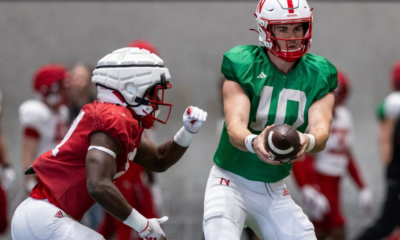

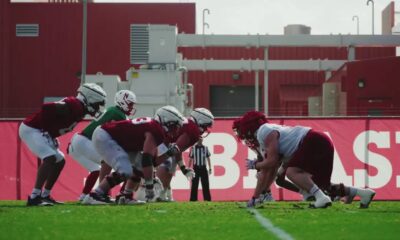





You must be logged in to post a comment Login